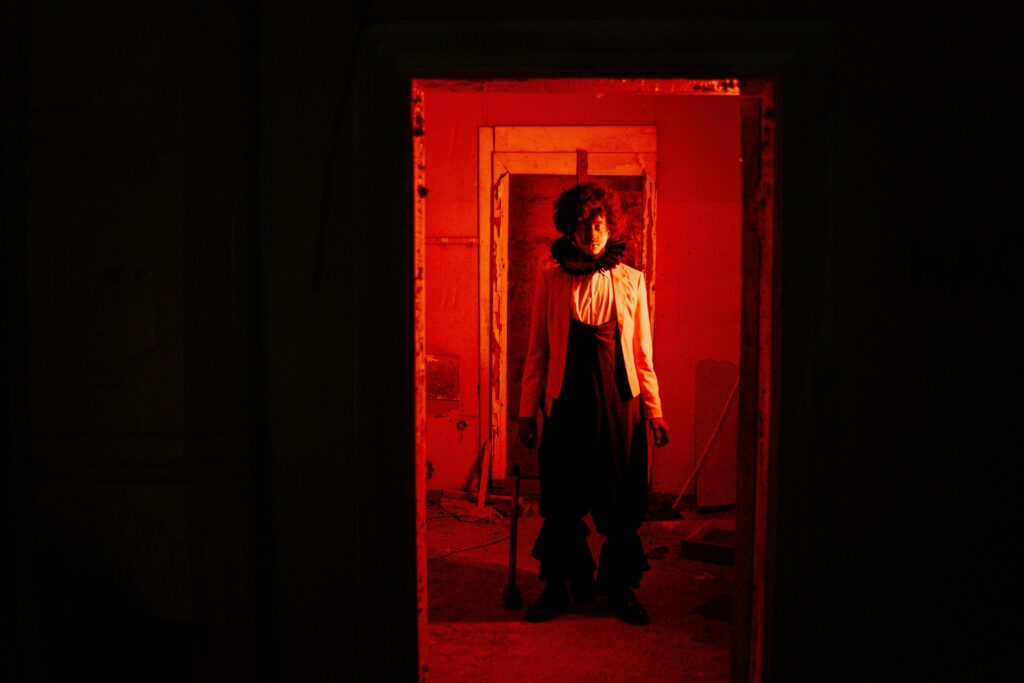The 2024 psychological horror film Heretic has captivated audiences with its intricate narrative and thought-provoking themes. Directed by Scott Beck and Bryan Woods, the movie delves into the complexities of faith, control, and human resilience. This analysis aims to dissect the film’s ending, explore its central themes, and address common questions that have emerged among viewers.
Plot Overview
Heretic follows two Mormon missionaries, Sister Barnes (Sophie Thatcher) and Sister Paxton (Chloe East), who visit the home of Mr. Reed (Hugh Grant), a reclusive theology professor. What begins as a routine missionary visit quickly spirals into a harrowing ordeal as Mr. Reed challenges their beliefs and subjects them to a series of psychological and physical trials.
Deciphering the Ending
The film’s climax is both intense and ambiguous. After enduring Mr. Reed’s manipulative games, Sister Paxton manages to escape the confines of his house. As she emerges into the open, a butterfly lands on her finger—a poignant moment that ties back to an earlier conversation where she expressed a desire to be reincarnated as a butterfly. This scene has sparked various interpretations:
- Literal Interpretation: The butterfly is real, symbolizing Sister Paxton’s survival and newfound freedom.
- Metaphorical Interpretation: The butterfly represents Sister Barnes’ spirit, suggesting a spiritual connection between the two women.
- Hallucinatory Interpretation: The butterfly is a figment of Sister Paxton’s imagination, indicating psychological trauma or a coping mechanism.
The filmmakers intentionally left the ending open to interpretation. As co-director Scott Beck stated, “Our ambition with this film is that it’s a conversation starter… There can be three, four, five different interpretations of how you walk away from that movie.”
Central Themes Explored
The Illusion of Control
Mr. Reed’s assertion that “the one true religion is control” underscores the film’s exploration of power dynamics. He believes that by manipulating others, he can assert dominance and challenge their faith. However, the resilience of Sister Barnes and Sister Paxton ultimately subverts his ideology, highlighting the human capacity to resist coercion.
Faith Under Siege
The missionaries’ ordeal tests the strength and authenticity of their beliefs. Despite Mr. Reed’s attempts to dismantle their faith through psychological torment, both women demonstrate unwavering commitment to their convictions. This resilience serves as a testament to the enduring nature of personal faith.
Ambiguity and Interpretation
Heretic thrives on ambiguity, encouraging viewers to engage in personal reflection. The film does not provide clear answers, instead prompting audiences to question their own beliefs and the nature of reality. This open-endedness is a deliberate choice by the filmmakers to foster discussion and introspection.
Addressing Common Questions
Was Sister Barnes’ Resurrection Real?
In a pivotal scene, Sister Barnes appears to return from the dead to save Sister Paxton. This moment can be interpreted in several ways:
- Literal Resurrection: A supernatural event where Sister Barnes is miraculously revived.
- Last Act of Strength: Sister Barnes musters her remaining strength to intervene before succumbing to her injuries.
- Hallucination: A manifestation of Sister Paxton’s trauma and desire for salvation.
The film does not confirm any single interpretation, leaving it to the audience’s discretion.
What Does the Butterfly Symbolize?
The butterfly serves as a multifaceted symbol:
- Freedom: Representing Sister Paxton’s escape and liberation from captivity.
- Spiritual Connection: Suggesting a link to Sister Barnes’ spirit or the afterlife.
- Psychological State: Indicating Sister Paxton’s mental and emotional condition post-trauma.
This symbolism aligns with the film’s overarching themes of faith, control, and personal interpretation.
Is Mr. Reed’s Philosophy Justified?
Mr. Reed’s belief that control is the ultimate religion is a central conflict in the film. While he presents compelling arguments about the nature of power and belief, his methods—kidnapping, manipulation, and psychological torture—are ethically indefensible. The film critiques his ideology by showcasing the missionaries’ resistance and the ultimate failure of his attempts to dominate them.
Conclusion
Heretic is a complex and thought-provoking film that challenges viewers to confront questions about faith, control, and the human spirit. Its ambiguous ending and rich thematic content invite multiple interpretations, ensuring its place as a significant work in contemporary psychological horror cinema.
For further reading on the film’s themes and interpretations, consider exploring the following resources:


